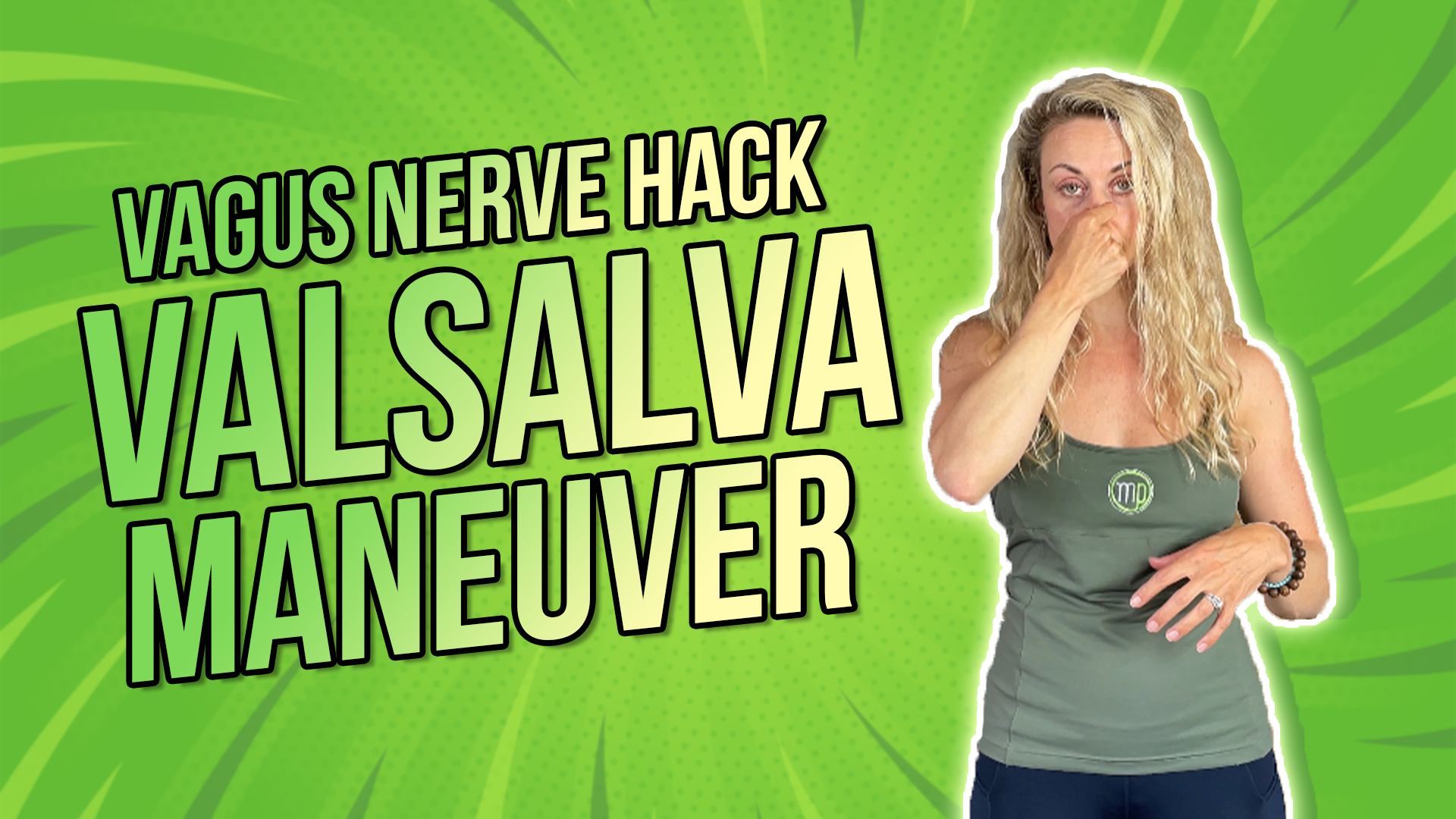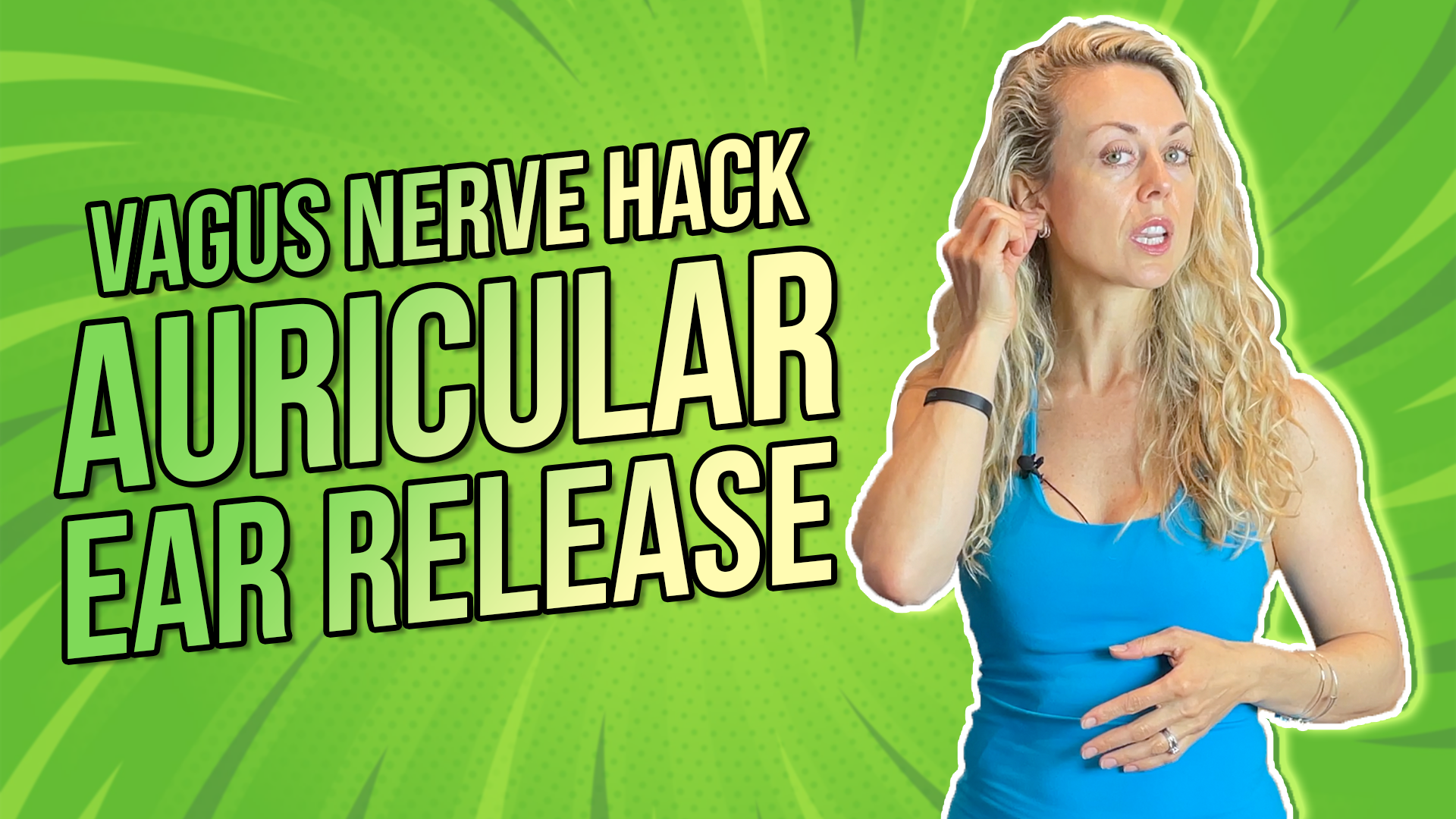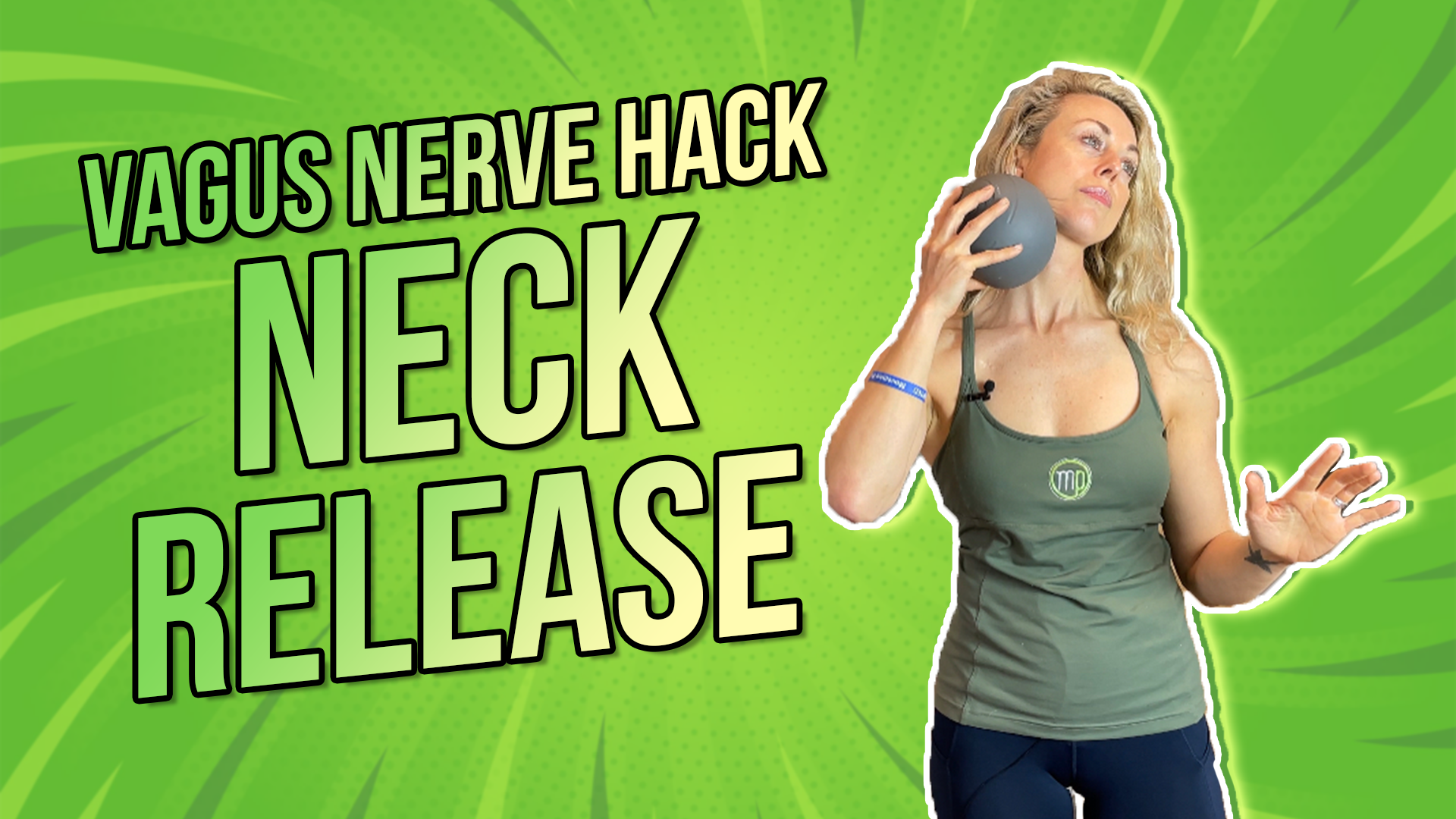Let’s discuss another vagus nerve hack that you can incorporate into your day to decrease your heart rate and regulate your nervous system. This one is a little unique; it’s different than our standard slow, deep breathing. The Valsalva maneuver is great for anyone that’s experiencing super ventricular tachycardia (SVT), which is an increase in your heart rate. In essence, it will slow the heart rate down and create a relaxation response.
Rather watch or listen than read?
Anatomy
Now let’s talk a little bit about anatomy. The vagus nerve is leaving the brainstem and branches off to innervate muscles of the face, ears, throat, heart, digestive tract, and elimination tract. As it relates to the heart, specifically for this maneuver, the vagus nerve innervates the SA node of the heart. So, by creating pressure in the chest, it signals the SA node to signal the AV node to decrease the heart rate. In essence, the Valsalva will slow the signaling down in the lower chamber of the heart, which decreases the heart rate.
Precautions
Before we get into how you’re going to perform the technique, I do want to remind you who should not perform this technique. Anyone that has a known heart condition, congenital heart disease, coronary artery disease, or heart disease, should not perform this, and/or check with your medical doctor. There is a temporary increase in blood pressure so it can place you at higher risk. If you do not fall into one of those categories, please feel free to give this a try.
How to Perform the Technique:
- Inhale normally, pinch your nostrils, and begin to exhale.
- Hold it for 10 seconds. You’re exhaling through the nose while you are pinching your nasal valves, thereby creating pressure in your chest.
Initially evaluate how you feel, and then you could repeat this several times. It should have a slowing of the heartbeat and relaxation response. A great thing to do is to take your pulse before and after the maneuver to see if it has lowered your heart rate. You can use your radial or carotid pulse, whatever is easiest for you. Just make sure not to use your thumb when taking your pulse. The Valsalva maneuver can be a great addition to your life and your health.
Reach out for a 15-minute FREE discovery session to see how we can help you on your journey.
For more content, make sure to subscribe to our YouTube channel here.
Other things that may interest you:
Vagus Nerve Hack | Auricular Ear Release



